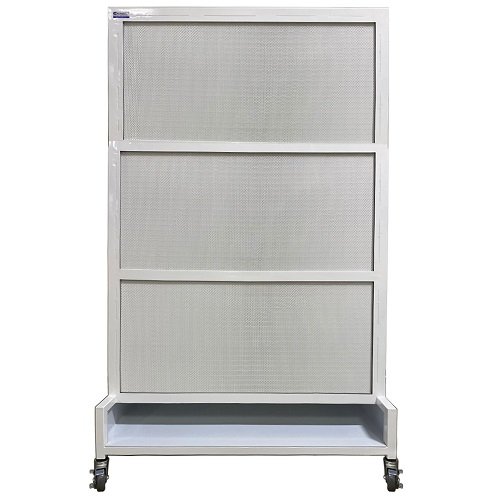In case you are a lab owner, then you would be aware of the multiple risks that come with conducting scientific experiments. This kind of experiment will give out toxic fumes and pollutants, which may contaminate the lab samples in the long run. The toxic elements may cause grievous injuries and even fatalities in your lab workers. So, it is important that you can find a good solution to filter the pollutants and make the air inside the lab clean and breathable. A HEPA filter can accomplish this task efficiently, and you must definitely get one for your lab.
Why is the HEPA filter so fundamental in a modern lab?

Modern labs conduct various experiments in which microscopic particles get released into the air. While these particles are not visible, but they are dangerous and can be extremely dangerous if we were to breathe them. At times, these particles can also be toxic and may cause severe infections to your lab workers. The HEPA filter can effectively address such a problem because it can purify the air of all such harmful particulate matter and pollutants.
What are the major features of modern HEPA filters?
You can consider getting an HEPA air cleaner and an ionizer for your lab. These systems have a compact design. The filters will make the air cleaner, while the ionizer will remove all bad odors. The ionizer will also release ions that can suck impurities from the air like dust and pollen. You may install these filters either in a horizontal or in a vertical position. These systems will work at their optimum best when your room has a surface area greater than 100 square feet.
Modern HEPA filters do not produce any sound during the filtration process and lower all risks of air leakage. The products also come with a monitor to indicate the replacement status of the filters. You can control the fan speed with remote controls. There are smaller-sized filters that are more suited for smaller labs. The more expensive HEPA filters will use digital control systems with power lights. You will have the chance to change the filtration speed in between 3 stages and program the timer to save energy. These filters have a longer shelf life and do not require frequent changes or replacements.
Which HEPA filtration system would be most suitable for your lab?

The laminar flow hood will purify the air in your lab’s working environment by providing a constant layered flow of fresh air inside the lab. Your lab workers can safely breathe this fresh air without having any fear of contamination. These flow hoods function through the HEPA filters that purify the air. The flow hoods have high-tech airflow systems and, thereby, maintain air purity inside a large lab. Additionally, the filters are leakproof, so there is no risk of unfiltered air leaking inside the lab. Some HEPA filters have carbon filters to remove odors and larger particulate matter. Some filters also have indicators with digital controls for assessing when you need to change your filters. IF you have a smaller lab, then you can install the portable HEPA filtered laminar flow hoods.
You can procure a HEPA filtered laminar air flow system through both an online and an offline lab equipment supplier. An online supplier will be able to offer you better discounts and more variety as compared to an offline retailer. But, you should remember to check the credentials of your supplier before finalizing any deal with them.
Conclusion
It is important to keep a HEPA filter in the lab so that you can purify the working environment of dust, spores, and other particulate matter. HEPA filters can also purify the air of toxic fumes and provide cleaner air for your workers to breathe. IF you can get a laminar flow hood with HEPA filter, then you can ensure that your large lab has a consistent flow of pure air. There are several types of laminar flow hoods available with HEPA technology. You can procure these from both online and offline suppliers. You should choose one which can fit your specific requirements and budget. The HEPA filter will surely ensure that your lab’s functionality improves.

